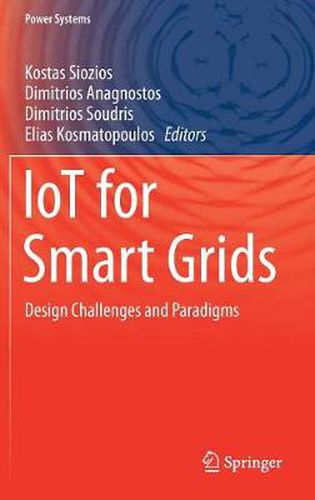Readings Newsletter
Become a Readings Member to make your shopping experience even easier.
Sign in or sign up for free!
You’re not far away from qualifying for FREE standard shipping within Australia
You’ve qualified for FREE standard shipping within Australia
The cart is loading…






This title is printed to order. This book may have been self-published. If so, we cannot guarantee the quality of the content. In the main most books will have gone through the editing process however some may not. We therefore suggest that you be aware of this before ordering this book. If in doubt check either the author or publisher’s details as we are unable to accept any returns unless they are faulty. Please contact us if you have any questions.
This book explains the fundamentals of control theory for Internet of Things (IoT) systems and smart grids and its applications. It discusses the challenges imposed by large-scale systems, and describes the current and future trends and challenges in decision-making for IoT in detail, showing the ongoing industrial and academic research in the field of smart grid domain applications. It presents step-by-step design guidelines for the modeling, design, customisation and calibration of IoT systems applied to smart grids, in which the challenges increase with each system’s increasing complexity. It also provides solutions and detailed examples to demonstrate how to use the techniques to overcome these challenges, as well as other problems related to decision-making for successful implementation. Further, it anaylses the features of decision-making, such as low-complexity and fault-tolerance, and uses open-source and publicly available software tools to show readers how they can design, implement and customise their own system control instantiations. This book is a valuable resource for power engineers and researchers, as it addresses the analysis and design of flexible decision-making mechanisms for smart grids. It is also of interest to students on courses related to control of large-scale systems, since it covers the use of state-of-the-art technology with examples and solutions in every chapter. And last but not least, it offers practical advice for professionals working with smart grids.
$9.00 standard shipping within Australia
FREE standard shipping within Australia for orders over $100.00
Express & International shipping calculated at checkout
This title is printed to order. This book may have been self-published. If so, we cannot guarantee the quality of the content. In the main most books will have gone through the editing process however some may not. We therefore suggest that you be aware of this before ordering this book. If in doubt check either the author or publisher’s details as we are unable to accept any returns unless they are faulty. Please contact us if you have any questions.
This book explains the fundamentals of control theory for Internet of Things (IoT) systems and smart grids and its applications. It discusses the challenges imposed by large-scale systems, and describes the current and future trends and challenges in decision-making for IoT in detail, showing the ongoing industrial and academic research in the field of smart grid domain applications. It presents step-by-step design guidelines for the modeling, design, customisation and calibration of IoT systems applied to smart grids, in which the challenges increase with each system’s increasing complexity. It also provides solutions and detailed examples to demonstrate how to use the techniques to overcome these challenges, as well as other problems related to decision-making for successful implementation. Further, it anaylses the features of decision-making, such as low-complexity and fault-tolerance, and uses open-source and publicly available software tools to show readers how they can design, implement and customise their own system control instantiations. This book is a valuable resource for power engineers and researchers, as it addresses the analysis and design of flexible decision-making mechanisms for smart grids. It is also of interest to students on courses related to control of large-scale systems, since it covers the use of state-of-the-art technology with examples and solutions in every chapter. And last but not least, it offers practical advice for professionals working with smart grids.